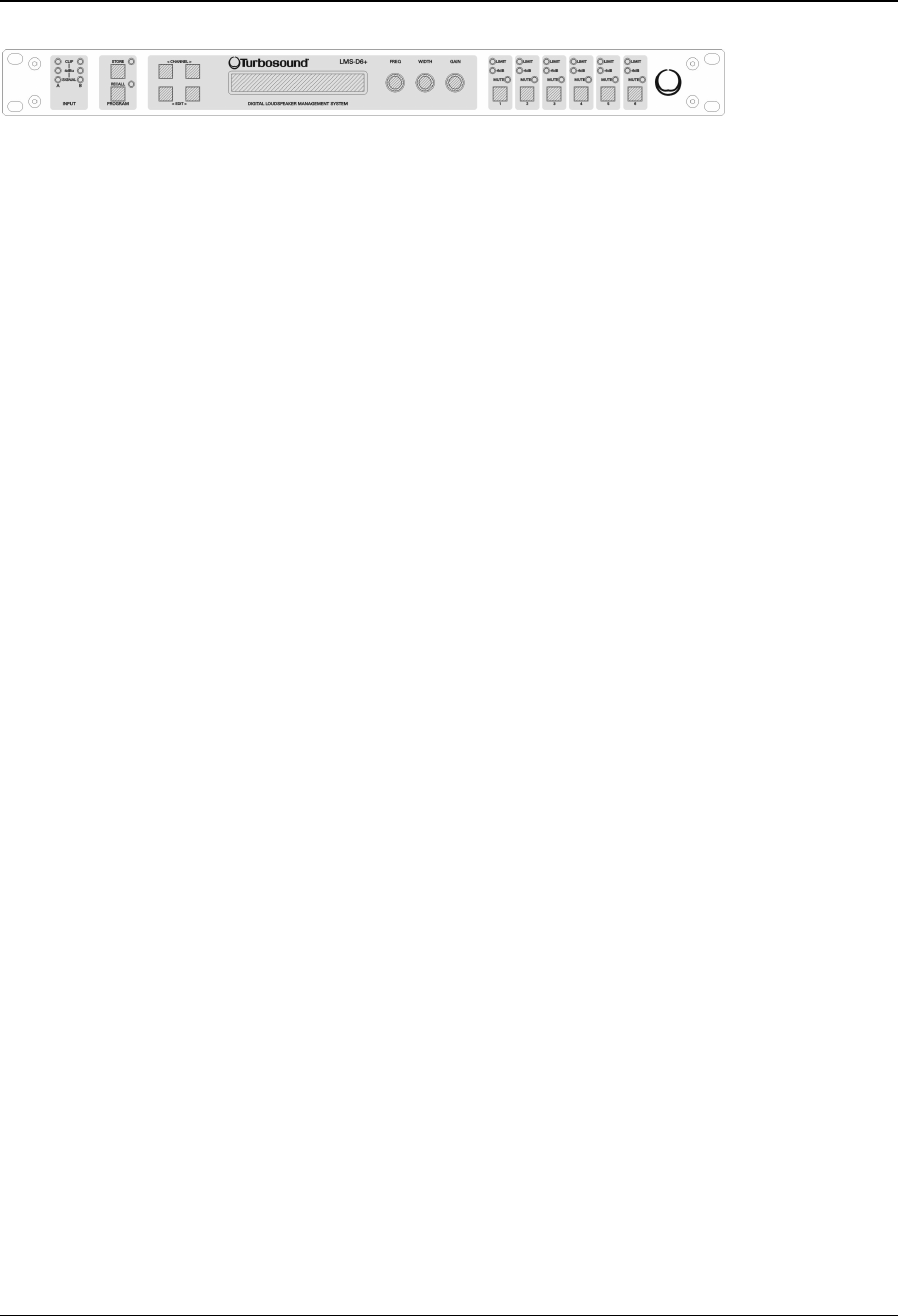
user manual
TCS Compact series
tcs compact manual
page 21
LMS-D24/6 Quick Reference Set Up
(LMS-D26 shown)
The LMS-D24 and LMS-D26 are designed for quick setup and adjustment via an easy-to-
use menu structure accessed by front panel buttons and 3 rotary encoders. A high
resolution backlit LCD display provides the user interface to the menu options and
parameters being adjusted.
Input Signal Indicators - three pairs of LED’s indicate signal present, +4dBu and input clip
for both channels. The signal present LED’s operate at approximately –40dBu, giving a
useful indication of even relatively low input signal levels. The +4dBu LED’s are intended
to show nominal operating level and can also be useful for setting system gain structure.
Clip LEDs warn the user of input overload and operate at +19dBu.
Starting up
The unit will energise as soon as power is applied to the IEC inlet; there is no power
switch. During the start up process the firmware application model number and version
numbers are displayed and the outputs are muted until the unit has completed its internal
checks. Once the start-up routines are complete and the unit is ready to pass audio, the
DSP signal path will be restored to the current settings when it was last powered down
and the audio signal is gradually ramped up to its correct level. At this stage the display
shows the default screen with the memory location and name of the current Preset on the
lower line of text.
About Presets
The unit has 45 memory locations and there is a library of around thirty ‘Factory’ Presets
to suit a range of Turbosound enclosures. Factory Presets are locked so they cannot be
over-written although edited versions can be stored in the free preset locations. Details of
all the Factory Presets can be found in Appendix A in the LMSD2x pdf in the downloads
section of www.turbosound.com.
Factory Presets contain some parameters that are fixed and hidden from view; typically
crossover frequencies, output delay and some EQs; those settings that are a function of
the loudspeaker cabinet design and should not require adjustment for different
applications. The number and type of hidden parameters is dependant on the Factory
Preset. The remainder of the DSP parameters are available for user manipulation.


















